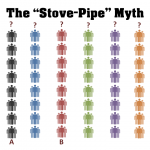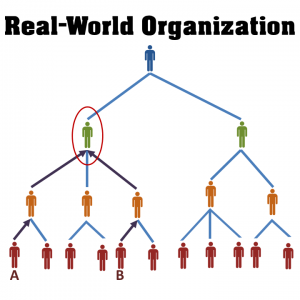 What will we see in response to revelations that Texas Health Presbyterian Hospital (THPH) and the Centers for Disease Control and Prevention (CDC) dropped the ball on persons infected with or at risk from the Ebola virus?
What will we see in response to revelations that Texas Health Presbyterian Hospital (THPH) and the Centers for Disease Control and Prevention (CDC) dropped the ball on persons infected with or at risk from the Ebola virus?
At New Gov Office, we expect to see the social factors of failure aggressively suppressed, in the all-too-typical hesitation to assign personal consequences for failed performance.
Post-9/11 people factor suppression
Perhaps the most well-publicized example of this sort of people factor cover-up was in the shallow introspection of the US Intelligence Community (IC) after the terrorist attacks of September 11.
The go-to explanation for the intelligence failures leading up to the attacks was that the various intelligence disciplines, intelligence agencies, and target-based analytical communities were “stove-piped,” meaning that were stacked up and isolated and therefore couldn’t communicate with each other.
 If analyst A and analyst B each had separate pieces of the same puzzle, there was no way for them to put these pieces together. Therefore the solution was more “collaboration.”
If analyst A and analyst B each had separate pieces of the same puzzle, there was no way for them to put these pieces together. Therefore the solution was more “collaboration.”
In the stove-pipe explanation, both the problem and the solution were identified as things, mere organizational phenomena, as if they appear from nowhere and nobody is responsible.
Or, vaguely, “everybody” is responsible. Which is just another way of saying that nobody is responsible.
The stove-pipe Explanation was the analytical equivalent of writing in the passive voice, removing the agents and leaving only consequences with no path to accountability. Who was in charge of these allegedly isolated stacks, and therefore personally responsible for de-isolating them? Conveniently, these individuals were invisible to the stove-pipe model.
Of course, that is why the stove-pipe model is a complete myth. This is not how real-world organizations, including the US Federal Government, are set up. The truth is that every single person in an organization is already connected to every other person through a command-and-control structure.
 The chains-of-command for any two members of an organization meet in an individual who is responsible for coordinating their respective activities. Thus, any “collaboration” failure within a human organization is ultimately a human failure, a personal failure, not merely a structural or cultural failure.
The chains-of-command for any two members of an organization meet in an individual who is responsible for coordinating their respective activities. Thus, any “collaboration” failure within a human organization is ultimately a human failure, a personal failure, not merely a structural or cultural failure.
People factor cover-ups like the stove-pipe explanation enable the avoidance of personal consequence and tempt us to pretend that we can fix problem while letting those who had been assigned to identify and fix the problem, who were compensated to identify and fix the problem, and who failed to identify and fix the problem, nevertheless retain the compensation they were receiving as problem-fixers while failing to fix problems.
The stove-pipe explanation is thus a form of phaticization, socially driven on-the-books embezzlement, because it gives the appearance of legitimately serving the mission of the organization while actually serving an illicit social purpose at the expense of the mission.
All of the rewards retained and subsequently obtained due to this sort of people factor cover-up are, from the standpoint of genuine merit principles, stolen.
Fully addressing the social factors
The people factor doesn’t stop with allowing people to retain social rewards despite their failures. It also covers up the phaticized processes that allowed the wrong people to rise into positions of trust and responsibility in the first place.
Processes, policies, and organizations are designed by people, so if there are procedural, policy, or organizational problems with how we have reacted to Ebola, that means there are people problems at the root of it.
If the wrong people were in charge—in the IC, CDC, or THPH—this raises the further question of how they got in charge. What social biases and instincts, what social corruptions, what anti-merit social advantages put them there?
If we really want to fix the problems that put Americans at risk of the deadliest epidemic of the 21st century, and if we really want to clean phatic corruptions from organizations throughout society, we’ll start identifying the real problems and applying real solutions by fully addressing the social factors of failure.
And, that begins by putting the right people in charge and asking how the wrong ones got there.
